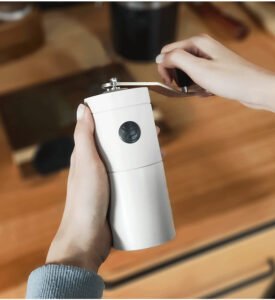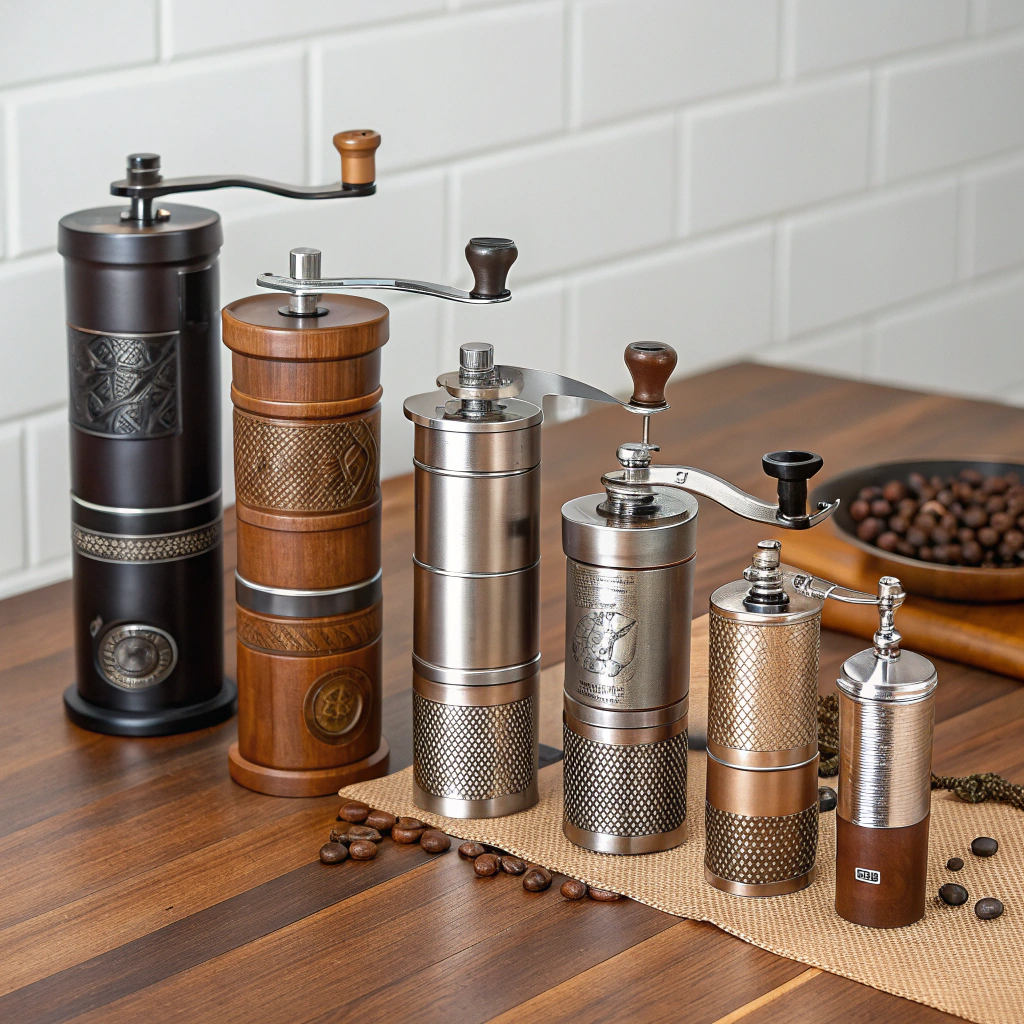Your pre-ground coffee tastes flat and uninspired. You want that fresh cafe flavor at home. A quality manual coffee grinder gives you control, portability, and amazing taste in every cup.
The best manual coffee grinder provides a consistent grind size thanks to its burr mechanism. Unlike blade grinders, burrs crush beans uniformly, which is crucial for preserving delicate flavor and aroma. This single difference is the key to unlocking the full potential of your coffee beans.

Freshly ground coffee is a true game-changer for any coffee lover. I remember the first time I switched from pre-ground to grinding my own beans right before brewing. The difference in aroma alone was incredible. But not all manual grinders are the same. Some can deliver cafe-quality results, while others might just leave you frustrated. So, what really matters when you're choosing one? Let's break down the details to help you find the perfect grinder for your needs.
Why is a consistent grind so important for my coffee?
You follow the same recipe, but your coffee tastes different every time. Sometimes it's bitter, other times it's weak. This inconsistency can ruin even the most expensive coffee beans. The secret to fixing this is a consistent grind.
A consistent grind ensures all coffee particles are the same size. This allows water to extract flavor evenly during brewing. Uneven grinds cause some particles to over-extract (bitter taste) and others to under-extract (sour taste), leading to a disappointing and unbalanced cup of coffee.

The core of a great grind is the mechanism inside the grinder. It's all about getting every little piece of coffee to be the same size. This is important because water is the solvent that pulls flavor out of the coffee. If you have big chunks and tiny dust-like particles, the water will pull too much flavor from the dust (making it bitter) and not enough from the chunks (making it sour). This is why blade grinders are not recommended for good coffee. They just chop the beans into random sizes. A burr grinder, on the other hand, crushes the beans between two revolving surfaces. You set the distance between the burrs, and the beans are crushed to that specific size.
Blade vs. Burr: The Grinding Showdown
| Feature | Blade Grinder | Burr Grinder |
|---|---|---|
| Method | Slices and shatters beans | Crushes beans between two burrs |
| Consistency | Very inconsistent (dust and chunks) | Highly consistent, uniform size |
| Flavor | Unbalanced (bitter and sour) | Balanced, rich, and full-bodied |
I learned this lesson the hard way. My first grinder was a cheap blade model. My coffee was always unpredictable. The day I got my first manual burr grinder, my coffee-making world changed. The flavor became clean, bright, and consistent every single morning.
What are the key features to look for in a manual grinder?
You're ready to buy a manual grinder, but they all look different. It can be confusing. Choosing the wrong one could mean a broken handle or a grinder that's impossible to clean. You should focus on three things: burr material, build quality, and cleaning.
Look for a grinder with high-quality burrs made from stainless steel or ceramic. They provide consistent results and last for years. A solid build quality is also important. Also, check if it's easy to take apart for cleaning. This is essential for good flavor and a long-lasting grinder.

When we look inside a grinder, the burrs do all the important work. The material they are made from matters a lot. As a manufacturer, we see a big difference in performance and longevity based on the materials used. A good manual grinder with proper care can last five to ten years, making it a great investment. Cleaning is also simple. You just take it apart and use a dry brush to wipe the burrs. Never use water, as it can cause rust and damage the parts.
Ceramic vs. Stainless Steel Burrs
| Feature | Ceramic Burrs | Stainless Steel Burrs |
|---|---|---|
| Heat Transfer | Low, stays cool during grinding | Can heat up slightly with very fast grinding |
| Durability | Very hard but can be brittle if dropped | Very durable and resistant to chipping |
| Sharpness | Stays sharp for a long time | Exceptionally sharp, great for fine grinds |
| Best For | All-purpose, from French Press to Drip | Precision grinding, especially for Pour Over and Espresso |
I once bought a cheap grinder with a flimsy plastic body. The handle broke within a month. I realized then that paying a little more for a grinder with a metal body and quality burrs is worth it. It's an investment that pays off with every single cup.
How do I choose the right grinder for my lifestyle and budget?
You are not sure if you need a high-end model. Maybe a budget option will work just fine. You do not want to spend too much or buy a grinder that doesn't meet your needs. The solution is simple: match the grinder to your brewing method, travel habits, and budget.
For brewing different types of coffee, choose a grinder with multiple grind settings. If you travel a lot, a small and light model is best. Budget grinders can work well for coarser grinds like French press, but premium models offer the precision needed for espresso.

The right grinder for you depends entirely on how you make your coffee. If you love the rich, heavy body of a French press, a budget-friendly grinder like the JavaPresse can work great. It excels at coarser settings. But if you are chasing the perfect espresso shot, you will need a grinder with very fine and precise adjustments, like a model from 1Zpresso. Trying to pull an espresso shot with grounds from a basic grinder is a recipe for disaster. I know because I've tried it. The water just flows right through, creating a weak, sour mess. You need the right tool for the job.
Matching Grind Size to Your Brew
| Brew Method | Ideal Grind Size | Why it Matters |
|---|---|---|
| French Press | Coarse | A coarse grind prevents sludge in your cup and allows for a long steep time. |
| Pour Over / Drip | Medium | A medium grind provides the perfect balance of surface area for a controlled extraction. |
| Espresso | Fine | A very fine, consistent grind creates resistance for the water, allowing pressure to build for a proper shot. |
If you travel often, portability becomes a key feature. Many manual grinders are designed to be small and lightweight, so you can have fresh coffee anywhere. Just find the one that balances performance with your personal needs.
Conclusion
A quality manual grinder is a smart investment. It delivers a consistent burr grind, is built to last, and can be matched to your specific brew methods and lifestyle.




